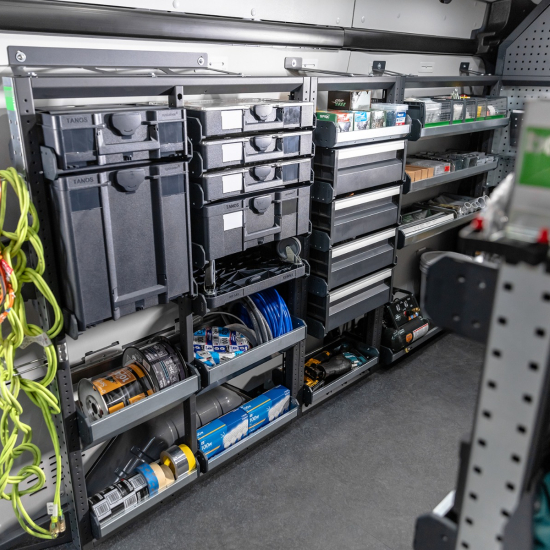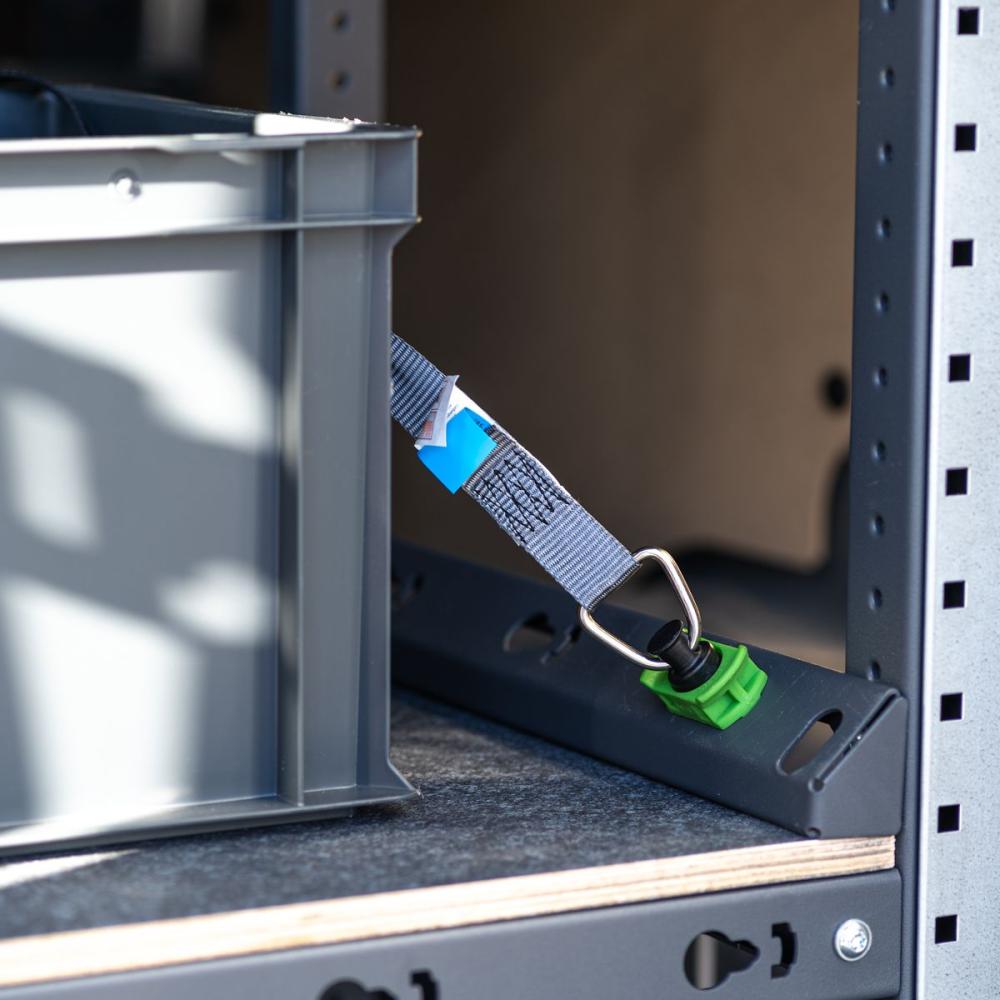Your van is more than just transport - it’s your workshop, your storeroom, and your livelihood on wheels. When it’s poorly organised, you waste time, lose money, and increase risk every single day.
We work with tradespeople across different industries - from plumbing and carpentry to landscaping. As such, we have seen what happens when things don’t quite go to plan! In this article, we will explore 10 of the most common van storage mistakes that tradespeople make, paired with some practical solutions to overcome them.
1. Not Choosing Modular Van Racking
A fixed, one-size-fits-all racking system locks you into a layout that might not work 12 months down the line. Your toolkit grows, your jobs change, and suddenly you’re working around your storage instead of with it.
Although your profession may stay the same, the demands of the job will naturally flex over time. A rigid storage setup might work for now, but you’re bound to face issues further down the line.
What to do instead: Go for modular van racking that you can add to, remove, or reconfigure as your needs change. This future-proofs your van and avoids costly rip-outs and refits later.

Our van racking is specifically engineered as a no-drill solution. Not only is this easier to work with as power tools are not required, it can also help you with resale value later down the line. No-drill systems are generally preferred by others when inheriting the vehicle as they can either adapt it, or remove it completely without causing harm to the van.
2. Ignoring Weight and Legal Requirements
Overloaded vans are a safety hazard and a legal risk. Going over your payload limit can land you with fines, points on your licence, and invalid insurance - not to mention extra wear on your brakes and suspension.
What to do instead: Use lightweight racking materials and regularly check your van’s payload. Distribute weight evenly to avoid overloading one side, which can affect handling and tyre wear.
3. Overlooking Fuel Efficiency
Every extra kilo in your van means more fuel burned. Heavy racking might not seem like a big deal, but it adds up to hundreds of pounds a year in extra running costs.
What to do instead: Choose lightweight systems and keep unnecessary items out of the van. Regularly audit your gear - if you haven’t used something in a month, store it in the workshop instead.
4. Skipping Security Accessories
Tool theft is one of the biggest headaches for tradespeople, costing money, lost work days, and stress. It’s estimated that thieves target vans every 12 minutes in the UK, and this stat is rising year-on-year.
A basic racking setup won’t stop thieves.
What to do instead: Install lockable drawers, use padlocks where possible, and keep valuable tools out of sight.
In terms of storage, the Trek Dror TKD1 is a great solution for this, constructed from robust corrugated 1.5m steel for durability and strength. This item can be stacked or fixed to a vehicle or surface, giving you flexibility within the vehicle.
Other solutions include adding van alarms or extra deadlocks for overnight security; plus, van graphics that state that no valuables are stored in the vehicle overnight.
5. Not Using Anti-Slip Mats or Flooring
Loose tools sliding around not only damage each other but can be dangerous in sudden stops. They also waste your time when you’re searching for something that’s rolled under a shelf.
What to do instead: Line shelves and drawers with anti-slip mats and install proper flooring with grip. This reduces movement and keeps your gear in good condition.
6. Poor Use of Vertical Space
If everything is piled on the floor, you’re wasting valuable storage space and creating trip hazards. It also makes unloading a pain when you need something buried at the back. You likely have plenty of room in your vehicle, it’s simply underutilised.
What to do instead: Think in layers. Use shelving and overhead storage to keep the floor clear. Place frequently used items at waist height for quick access.
7. Forgetting About Load Restraint
An unsecured load can become a projectile in an accident - a heavy item flying forward in a crash can be lethal.
What to do instead: Use tie-down straps, cargo nets, and bulkheads to secure heavy or loose items. Always check that everything is strapped or locked in before setting off.
8. Ignoring Ergonomics
Your van layout affects your health more than you might think. Constantly bending, twisting, or crawling into the van increases strain on your back and knees over time. It’s also incredibly frustrating.
What to do instead: Place the most-used items within easy reach. Use pull-out drawers or shelves so you don’t have to climb into the van for every job.
Also, consider clear-fronted storage to enable you to see what’s in each container before accessing it. This will speed up the time it takes to find the items you need, reducing the physical strain on your body.
9. Communication
Communicate your business purpose, values, and inspire people to get in touch with you.
10. Overcomplicating the Setup
Having too many drawers, compartments, and shelves can slow you down - especially if you’re the only one who knows where everything is stored.
What to do instead: Keep your system simple and logical. Label drawers, group items by task, and keep a clear space for materials you carry day to day.
The right van storage setup isn’t just about looking professional - it’s about working smarter, staying compliant, and keeping yourself safe. By avoiding these 10 mistakes, you’ll save time, protect your investment in tools, and make every job run more smoothly.
Ready to master space and time?
Design your ideal mobile workspace with our easy-to-use online configurator. Tailored to your van, built for your trade. Select your vehicle & start configuring







